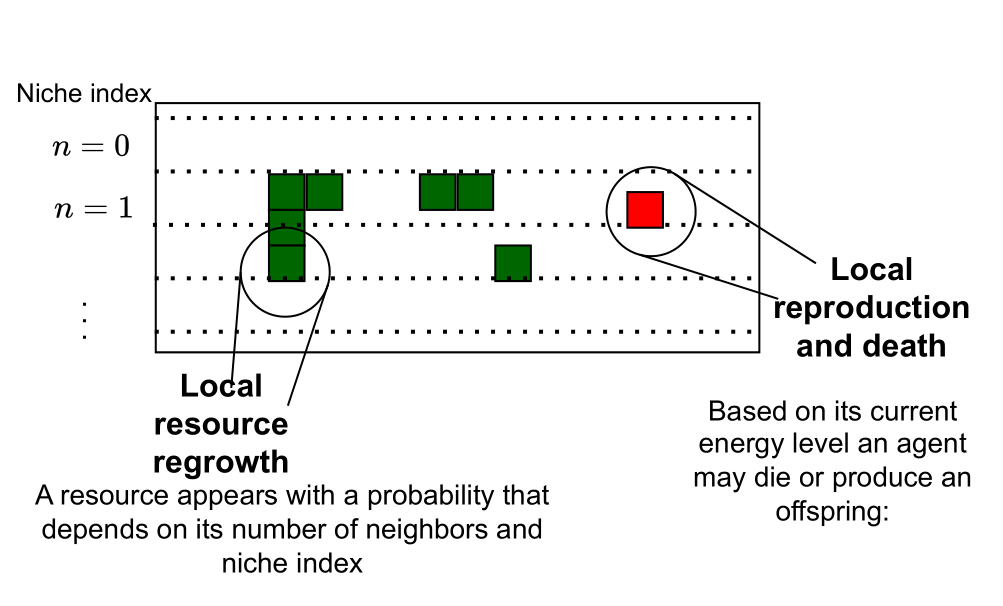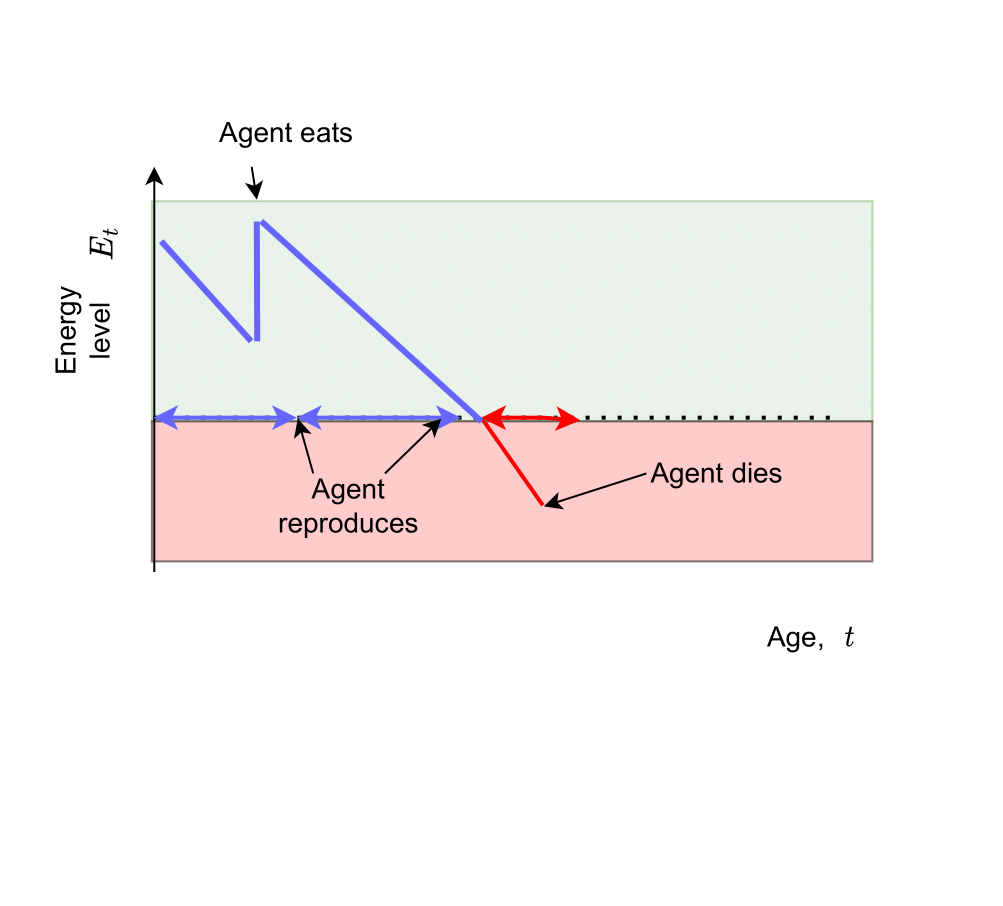This repo contains code for the paper "Eco-evolutionary dynamics of non-episodic neuroevolution in large multi-agent environments."
The paper is also accompanied by a website that provides illustrative videos of the simulation.
In this work we have proposed a grid-world foraging environment. It is implemented in JAX and can support very large population and grid sizes. For example, evolving a population of 1000 agents in a world of 100 K pixels for 1 million time steps takes about 10 minutes on a GPU.
Here is a schematic of the environment with agents and resources. The latter can grow in any pixel based on a probability that depends on the niche a resource belongs to. In this way, we can get a heterogeneous distribution of resources.
For real-time videos of the environment you can visit the accompanying website
In addition to the environment, we have proposed a neuroevolution method that we call non-episodic neuroevolution.
In classical neuroevolution, there are generations at the end of which the fittest agents in the population are chosen for reproduction.
Our method introduces two modifications:
- there are no generations. An agent reproduces when it meets a certain criterion independently of others. So agents can reproduce multiple times within their lifetime and don't die upon reproduction.
- an agent reproduces when its energy is above a minimum threshold and dies when it is below it. An agent begins its life with maximum energy, which drops linearly at each time step and receives a step increase when a resource is comsumed. We illustrate the role of the energy level in the following schematic:
The python packages you will need to have installed to run the code are listed in the requirements.txt file. You can create and activate a conda environment with the command:
conda env create -f environment.yml
conda activate ecoevojax
You can then run the script file run.py in two ways:
By running the following command you will evolve a population from scratch with the same configuration used in the paper:
python run.py natural
You can edit this script to run simulations with your own configuration.
For reproducibility, we provide the model files for the simulations discussed in the paper. They are under projects/pretrained, where you can see we provide two independent seeds.
With the following command you will load the pretrained models and evaluate them in the lab environments.
python run.py lab
When creating a new project or evaluating an existing one, you can look for the produced data files, plots and videos under a project-unique directory.
You can produce figures 8 and 9 and run the statistical significance results discussed in the paper by calling script reproduce_figures.py

